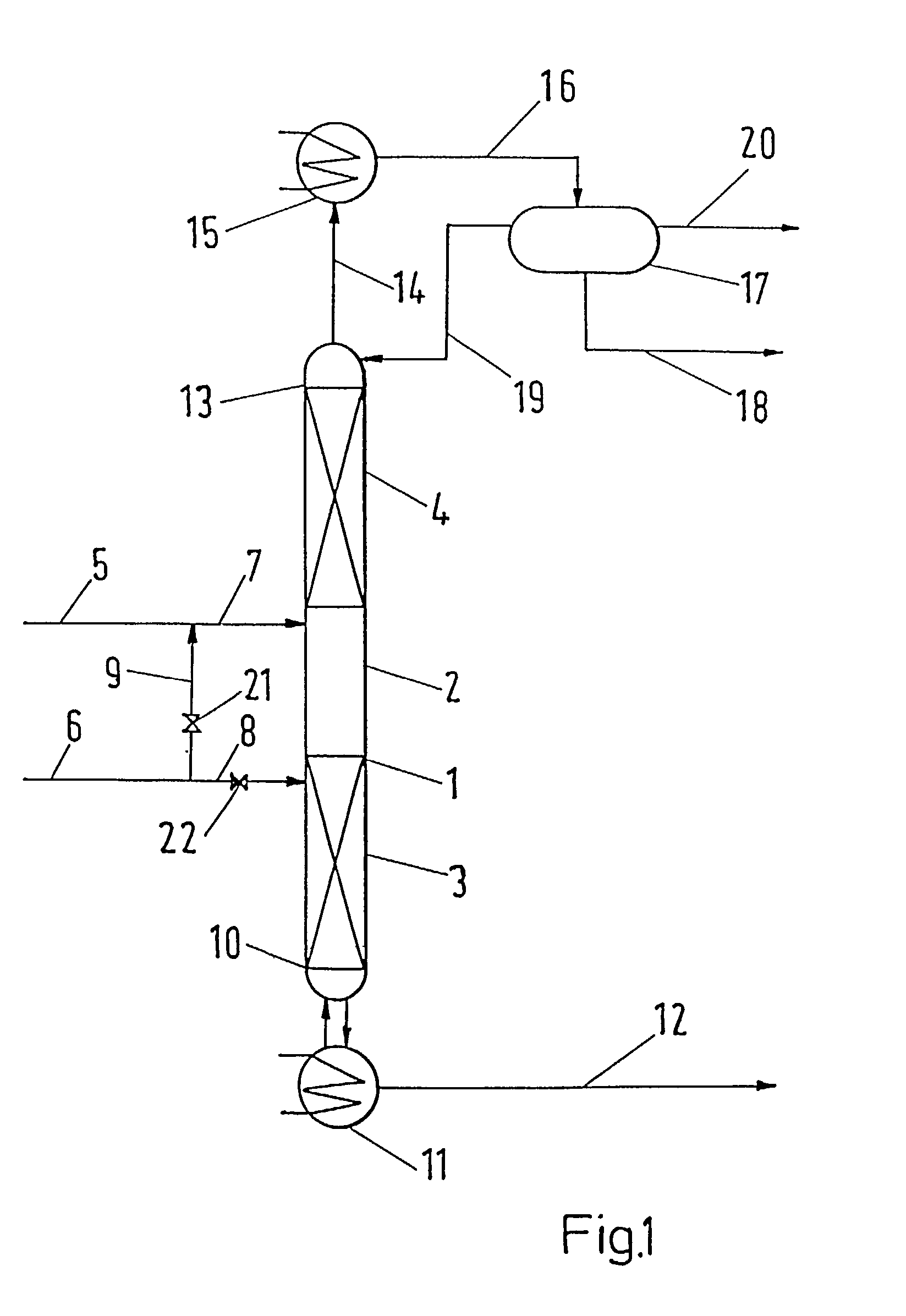Process and apparatus for the production of butylacetate and isobutylacetate
- Summary
- Abstract
- Description
- Claims
- Application Information
AI Technical Summary
Benefits of technology
Problems solved by technology
Method used
Image
Examples
example 1
[0027]The apparatus utilized for performing the process according to the invention is schematically presented in FIG. 1. A distillation column 1 operating under atmospheric pressure consisted of three zones. There was the reaction zone 2 in the middle part of the column 1, the lower separation zone 3 was placed below, while the upper separation zone 4 was above the reaction zone 2. Reboiler 11 was connected to bottom 10, condenser 15 was connected to column head 13 and to separator 17.
[0028]The reaction zone 2 was packed with an active packing containing 33 g of acidic ion exchange resin. Both the lower separating zone 3 and the upper separating zone 4 were packed with common tower packing—Berl saddles of characteristic dimension 4 mm. The lengths of the separation zones 3 and 4 were 0.5 m.
[0029]The process was performed as follows:
[0030]Acetic acid feed 7 was introduced above while butanol feed 8 was introduced below reaction zone 2. Both these starting components were fed at a rat...
example 2
[0031]An equimolar mixture of acetic acid and butanol was injected at the rate of 40.3 g / h into the apparatus described in example 1. 2.2 g / h of butanol were injected by line 8 below the reaction zone 2. 5.5 g / h of organic distillate were withdrawn by line 20. 32 g / h of the product containing 94.5% mass. of butylacetate were withdrawn from reboiler 11.
example 3
[0032]Esterification of butanol with acetic acid was performed by means of an apparatus consisting of reboiler 11 the volume of which was 50 dm3 and distillation column 1 equipped with condenser 15 and phase separator 17. The reaction distillation column 1 consisted of the reaction zone 2 packed with KATAPAK® S structural packing containing 710 g of an acidic ion exchange resin in H+ form, both the lower 3 and upper 4 separation zones were packed with CY® structural packing, with each zone having an efficiency equivalent to 20 theoretical stages. 1.21 kg per hour of a mixture containing 43.3% mass. of acetic acid and 56.6% mass. of butanol was injected at the boundary between the reaction zone 2 and the upper separation zone 4 through feed line 7. Vapors 14 condensed in condenser 15, the condensate 16, the temperature of which was 35° C., was divided into water and organic phases in separator 17. The water phase was taken off via 18, whole volume of the organic phase was refluxed to...
PUM
| Property | Measurement | Unit |
|---|---|---|
| Temperature | aaaaa | aaaaa |
| Fraction | aaaaa | aaaaa |
| Ratio | aaaaa | aaaaa |
Abstract
Description
Claims
Application Information
 Login to View More
Login to View More - R&D
- Intellectual Property
- Life Sciences
- Materials
- Tech Scout
- Unparalleled Data Quality
- Higher Quality Content
- 60% Fewer Hallucinations
Browse by: Latest US Patents, China's latest patents, Technical Efficacy Thesaurus, Application Domain, Technology Topic, Popular Technical Reports.
© 2025 PatSnap. All rights reserved.Legal|Privacy policy|Modern Slavery Act Transparency Statement|Sitemap|About US| Contact US: help@patsnap.com



